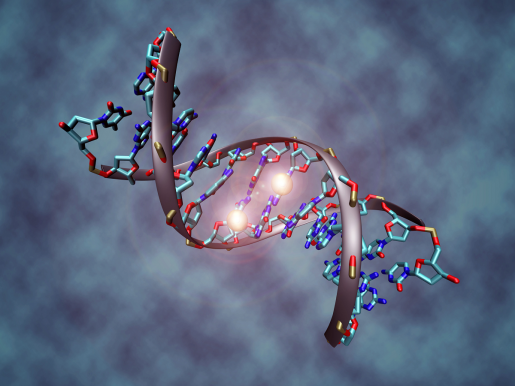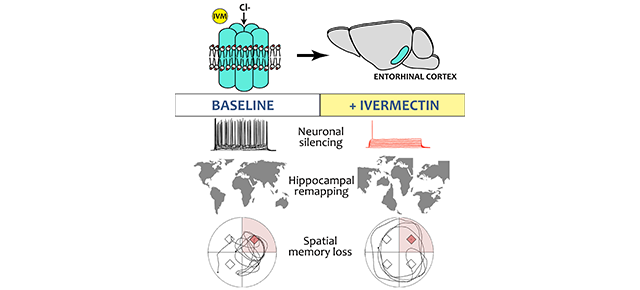The making of a ‘couch potato mouse’
Some people love to exercise, but others hate it. Many researchers consider genetics to be the reason for a person’s inclination to exercise, or not to, but at Baylor College of Medicine Dr. Robert A. Waterland has found evidence for a different molecular level of regulation.

“We study developmental programming, which refers to how the environment during development can have a long term impact on risk of disease,” said Waterland, professor of pediatrics – nutrition at the USDA/ARS Children’s Nutrition Research Center at Baylor and Texas Children’s Hospital.

Over the last several years, Waterland and his colleagues studied various mouse models to understand developmental programming of energy balance, that is, the balance of calories consumed vs. those burned off. A prolonged positive energy balance leads to obesity. Remarkably, whether the early environmental influence was fetal growth restriction, infant overnutrition or maternal exercise during pregnancy, the long-term effect on energy balance was always due to persistent changes in physical activity, not food intake.
“Our earlier findings suggested that establishment of one’s physical activity ‘set point’ can be affected by early environment, and that this may involve epigenetics,” said Waterland, who also is a professor of molecular and human genetics and a member of the Dan L Duncan Comprehensive Cancer Center at Baylor.
Epigenetics refers to molecular mechanisms, such as DNA methylation, meaning the addition of methyl chemical groups to DNA. DNA methylation is one mechanism that determines which genes are turned on or off in different cell types.
How the brain regulates the body’s energy balance
In the current study, Waterland and his colleagues designed an experiment to directly test whether DNA methylation in the brain affects energy balance. They focused on the hypothalamus, a brain region that plays a central role in energy balance, and in particular, studied a specialized subset of hypothalamic neurons called AgRP neurons, famous for their role in regulating food intake.
The researchers disrupted DNA methylation in AgRP neurons by disabling the Dnmt3a gene. Dnmt3a is responsible for adding methyl groups to DNA, particularly in the brain during early postnatal life. The results showed that, indeed, DNA methylation was dramatically reduced in AgRP neurons of these mice. The investigators then tested whether these animals gained or lost weight when compared to normal mice.
“We expected that interfering with DNA methylation in AgRP neurons would result in major changes in the animals’ weight,” said Dr. Harry MacKay, a postdoctoral fellow in the Waterland lab and first author of the study. “Somewhat disappointingly, however, the Dnmt3a-deficient mice were only slightly fatter than those that were not deficient.”

But when the researchers explored the cause of this change in energy balance, things got more interesting. The team expected to find differences in food intake between normal and Dnmt3a-deficient mice. But there were none. Instead, they found a major difference in spontaneous physical exercise.
The researchers placed running wheels in the animals’ cages for eight weeks and measured how much they ran each night. Normal male mice ran about 6 Km (3,7 miles) every night, but the Dnmt3a-deficient mice ran only half as much and, accordingly, lost less fat. Importantly, detailed treadmill studies showed that, although they ran only half as much as normal mice, the Dnmt3a-deficient mice were just as capable of running. They had the ability, but appeared to lack the desire.
Our findings suggest that epigenetic mechanisms, such as DNA methylation, that are established in the brain during fetal or early postnatal life, play a major role in determining individual propensity for exercise,” MacKay said.
“Nowadays, as decreases in physical activity contribute to the worldwide obesity epidemic, it is increasingly important to understand how all of this works,” Waterland said.
Read all about this work in the journal Nature Communications.
Other authors contributing to this work include Harry MacKay, C. Anthony Scott, Jack D. Duryea, Maria S. Baker, Eleonora Laritsky, Marta L. Fiorotto, Rui Chen, Yumei Li and Cristian Coarfa (Baylor College of Medicine); Amanda E. Elson and Richard B. Simerly (Vanderbilt University) and Theodore Garland Jr. (University of California at Riverside).
This work was supported by grants from the U.S. Department of Agriculture (CRIS 3092-5-001-059) and the National Institutes of Health (NIH) (5R01DK111831). Next generation sequencing was conducted at Baylor College of Medicine Functional Genomics Core, which is partially supported by the NIH shared instrument grant S10OD023469.


